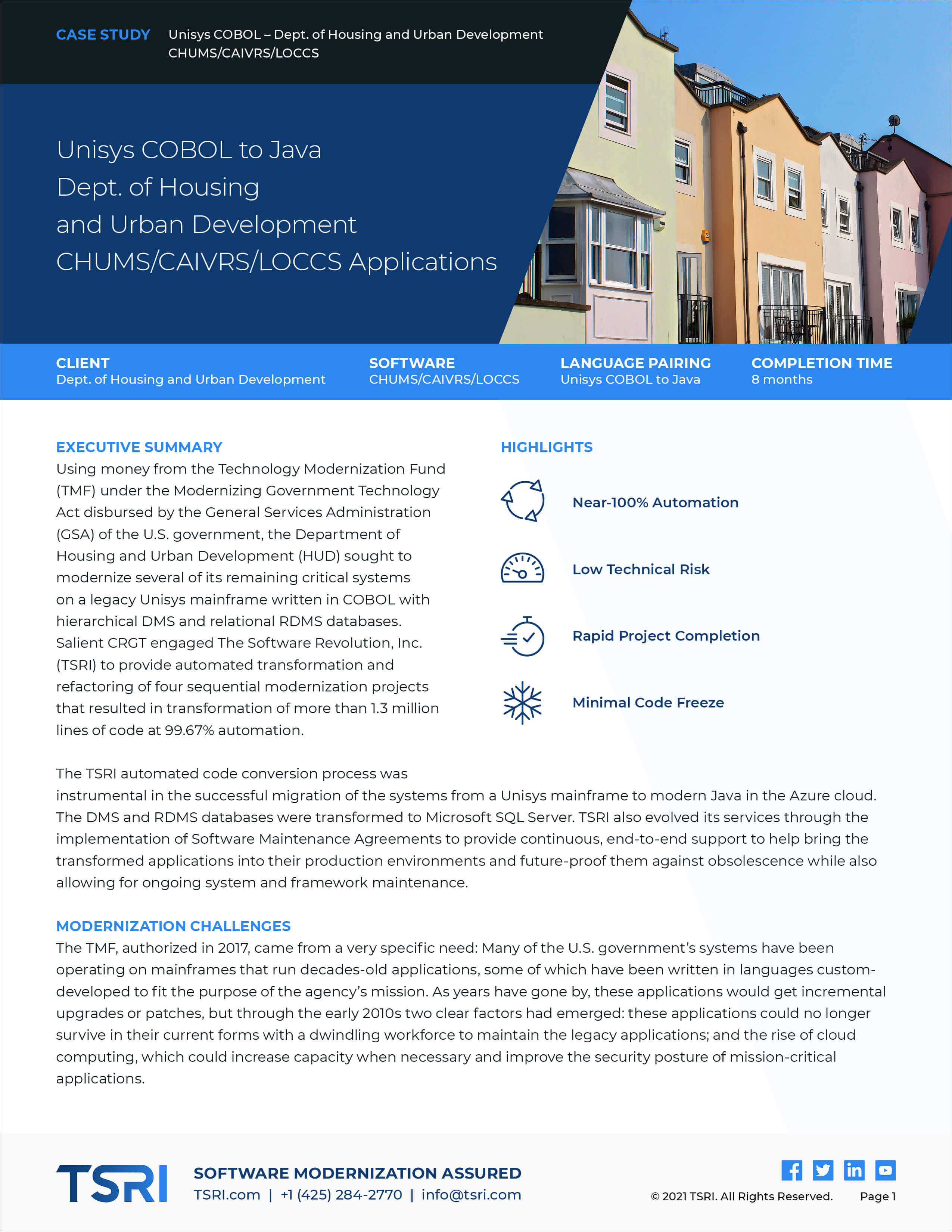Displaying items by tag: COBOL to Java
Lowered TCO by 90% - COBOL to Java on AWS for the U.S. Air Force
The U.S. Air Force's Integrated Logistics System - Supply (ILS-S), has been a cornerstone of military logistics for over five decades. This complex and mission-critical system, which tracks more than 35 million assets valued at $18 billion across 1.7 million warehouse locations, has been a significant part of the Air Force's operations, supporting 18,000 users and over 100,000 consumers of ILS-S information across 250 military installations.
Historically, the Air Force had attempted to modernize and move away from expensive Unisys Mainframes without success. Their earlier endeavors earned the system the nickname "The Beast" and was featured in a 2003 book on legacy system modernization by the Software Engineering Institute at Carnegie Mellon.
However, the outcomes changed dramatically when TSRI, NTT Data, and CGI leveraged TSRI’s model- and rule-based transformation and refactoring solution, JANUS® Studio, to modernize the 1.3 million lines of COBOL to Java and migrate the system to an elastic, secure, cloud-native environment on AWS GovCloud.
Watch Paul Saladna, Lead Architect at NTT Data discuss what made this project so successful!
In the initial phase, TSRI converted the 1.3 million lines of Unisys COBOL to modern, maintainable Java and the teams migrated the system to an on-prem mid-tier environment. In a second phase, the application underwent further automated refactoring by the teams for code quality and performance and then migrated to the AWS GovCloud, gaining the benefits of a cloud-native, scalable multi-tier environment like setting up DevSecOps and CI/CD pipelines and providing network interoperability.
This transformative project marked a significant milestone in automated modernization and cloud-native deployment for the Air Force and has been heralded as a huge success by the USAF, setting a precedent for future modernizations.
“All told, we started at $30 million prior to the modernization and ended at about $3 million post-modernization; a pretty significant cost savings!”
Paul, who started with ILS-S back in 2003, played a pivotal role in transitioning the system from a fragmented, green-screen-based setup to a unified cloud-computing solution. His leadership was instrumental in steering the project from its inception, through its on-prem modernization phase, to its ultimate migration to a cloud-native architecture on AWS.
The modernization's driving forces were multifaceted, focusing on reducing infrastructure costs, mitigating COBOL developer dependency, and enhancing platform stability and capabilities. The Air Force required a fast and seamless transition with no loss in functionality or performance, despite the concurrent challenges posed by active military engagements.
The decision to adopt AWS GovCloud was influenced by the Air Force's existing computational frameworks and the natural fit of AWS for Java/Python-based projects, given its extensive use and the associated economies of scale.
TSRI was chosen for this monumental task through a rigorous selection process, showcasing unparalleled automation capabilities and a thorough understanding of the legacy COBOL code, which set them apart from other vendors.
“TSRI demonstrated the highest degree of conversion capabilities and past performance and represented the lowest risk for us to achieve mission objectives. Really, they stood out.”
The outcomes of this modernization are profound, achieving a 90% reduction in total costs—from $30 million annually to approximately $3 million post-modernization. Additionally, the project facilitated the reassignment of COBOL developers to roles where their deep understanding of the system's logic and business requirements could be leveraged for the modernized ILS-S system.
The modernized ILS-S now boasts a remarkable 99.999% uptime, a testament to the enhanced platform stability and capabilities achieved through this project. This success has prompted the Business and Enterprise Systems Directorate (BES) of the USAF to replicate this modernization model across other critical systems, with TSRI currently working on the modernization of the Air Force's wholesale Stock Control System.
This journey from COBOL to Java, culminating in a truly cloud-native deployment on AWS, not only signifies a technological leap for the Air Force but also exemplifies a model of collaboration, innovation, and strategic foresight in modernizing critical defense systems.
To learn more about the project, read the case study
TSRI is Here for You
As a leading provider of software modernization services, TSRI enables technology readiness for the cloud and other modern architecture environments. We bring software applications into the future quickly, accurately, and efficiently with low risk and minimal business disruption, accomplishing in months what would otherwise take years.
See Case Studies
Learn About Our Technology
Get Started on Your Modernization Journey Today!
Additional Sources:
- https://federalnewsnetwork.com/it-modernization/2022/11/lessons-learned-from-air-forces-ils-s-logistics-system-modernization/
- https://www.aflcmc.af.mil/News/Article-Display/Article/2888877/system-tracks-every-item-in-the-air-force-inventory/
Educational Testing Service (ETS) - IBM COBOL to Java SE 17 Modernization on AWS
Educational Testing Service (ETS) is the world's largest private educational testing and measurement organization. Each year, they develop, administer, and score more than 50 million tests, including the TOEFL®, TOEIC®, GRE®, and Praxis® tests, in more than 180 countries. This requires an enormous data management capability. ETS turned to TSRI to transform their ECT and Praxis applications and databases from IBM job control language (JCL) and COBOL Batch to modern Java SE 17 in a cloud-native optimized AWS environment. To do this, they used a spring boot-type application to implement web services invoked by Python. TSRI also converted the IBM DB2 database and VSAM sequential database files to a relational PostgreSQL database on AWS Aurora.
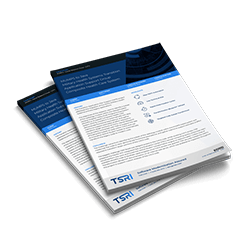 |
Customer: Educational Testing Service (ETS) Source & Target Language: IBM COBOL to Java SE 17 on AWS Lines of Code: 1,199,633 lines of COBOL and JCL Duration: 11 Months Services: Automated Code Transformation, Automated Refactoring, Integration and Testing Support, SonarQube Quality Refactoring, Code-Specific Adaptation, Database Migration, Transformation "To-Be" Blueprint®, Application "As-Is" Blueprint®, Code Warranty
|
- sql
- transformation blueprint
- Platform Migration
- modernization
- Software Code Modernization
- Refactoring
- Code Documentation
- modernize
- migration
- Data
- Data Migration
- assessment
- architecture
- multitier
- Microservices
- Micro Services
- monolithic
- Security Refactoring
- application modernization
- System Modernization
- Object Oriented
- Quality Output
- Asis Blueprint
- Software Modernization
- Modern Architecture
- ArchitectureDriven
- Software Transformation
- transformation
- cloudnative
- containerized
- modularized
- cobol
- mainframe
- COBOL to Java
- Java
- db2
- DB2 Database
- VSAM
- Monolithic COBOL
- COBOL Modernization
- COBOL Conversion
- Business Case
- DB/2 and VSAM
- stepwise
- input/output (DIO) layer
- SonarQube
- Quality Standards
- SonarQube Quality
- IBM z/OS
- IBM z/OS COBOL
- COBOL and CICS
- cics
- VSAM sequential files to relational
- VSAM to relational database
- PostgreSQL
- PostgreSQL on AWS Aurora
- user interface
- BMS
- BMS to Angular
- BMS to Web Screens
- Containerized on AWS
- Cost Savings
- Green Screen Modernization
- Architecture Diagram
- BMS to CSS
- BMS to HTML5
- Monolithic to Multitier
- Monolithic to cloud native
- VSAM to modern database
- jcl
- batch
Canada Revenue Agency (CRA) Help Desk - COBOL to Java Modernization on AWS
CRA and AWS engaged with TSRI to complete the modernization of their COBOL-based system to Java on AWS. To Achieve CRA's goals, TSRI tuned JANUS Studio® to parse, transform, document, and refactor the IBM z/OS COBOL application. In just 1.5 months, TSRI modernized the application from an IBM Mainframe COBOL and CICS monolith to a modern multi-tier architecture in Java on the AWS cloud. Just as important, TSRI also converted the DB2 database and VSAM sequential files to a relational PostgreSQL database on AWS Aurora.
 |
Customer: Canada Revenue Agency (CRA) and AWS Source & Target Language: IBM COBOL to Java on AWS Lines of Code: 168,000 Duration: 1.5 Months Services: Automated Code Transformation, Automated Refactoring, Integration and Testing Support, SonarQube Quality Refactoring, Code-Specific Adaptation, Database Migration, Transformation "To-Be" Blueprint®, Application "As-Is" Blueprint®
|
- sql
- transformation blueprint
- Platform Migration
- modernization
- Software Code Modernization
- Refactoring
- Code Documentation
- modernize
- migration
- Data
- Data Migration
- assessment
- architecture
- multitier
- Microservices
- Micro Services
- monolithic
- Security Refactoring
- application modernization
- System Modernization
- Object Oriented
- Quality Output
- Asis Blueprint
- Software Modernization
- Modern Architecture
- ArchitectureDriven
- Software Transformation
- transformation
- cloudnative
- containerized
- modularized
- cobol
- mainframe
- COBOL to Java
- Java
- db2
- DB2 Database
- VSAM
- Monolithic COBOL
- COBOL Modernization
- COBOL Conversion
- Business Case
- DB/2 and VSAM
- stepwise
- input/output (DIO) layer
- SonarQube
- Quality Standards
- SonarQube Quality
- IBM z/OS
- IBM z/OS COBOL
- COBOL and CICS
- cics
- VSAM sequential files to relational
- VSAM to relational database
- PostgreSQL
- PostgreSQL on AWS Aurora
- user interface
- BMS
- BMS to Angular
- BMS to Web Screens
- Containerized on AWS
- Cost Savings
- Green Screen Modernization
- Architecture Diagram
- BMS to CSS
- BMS to HTML5
- Monolithic to Multitier
- Monolithic to cloud native
- VSAM to modern database
- jcl
- batch
Press Release: TSRI Completes Four Government Mainframe Modernizations with TMF Funds
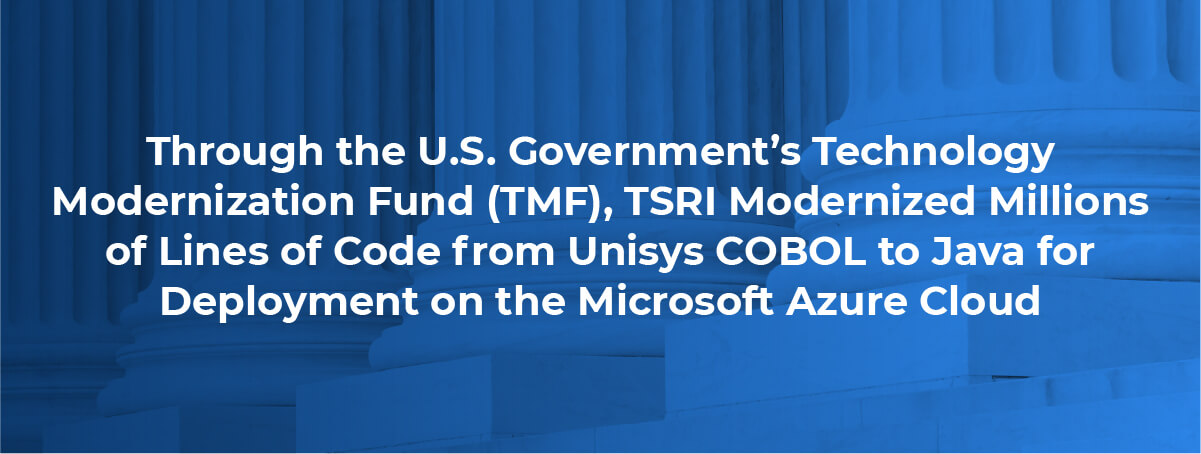
"The successful modernization and cloud deployment of these four critical government applications is proof that the U.S. Technology Modernization Fund is beginning to fulfill its purpose."
Nicolas Newcomb, TSRI President
KIRKLAND, Wash., March 31, 2022 (GLOBE NEWSWIRE) --TSRI, a recognized leader in fully-automated software modernization — announces the recent completion of a large-scale, public sector application modernization and mainframe retirement effort that transformed four critical, aging applications from Unisys COBOL to Java for a United States federal government agency. The federal agency’s applications containing millions of lines of code were modernized over three years and deployed to the Microsoft Azure Cloud.
The effort was the first of its kind to leverage the funds available to government entities via the Modernizing Government Technology (MGT) Act’s Technology Modernization Fund (TMF). With federal government mandates gaining further prominence and the bipartisan bill — the Legacy IT Reduction Act of 2022 — currently on the floor of the U.S. Senate, TSRI is well-positioned to support government entities in modernizing their outdated legacy information technology systems.
Critical and Aging Systems, Transformed for Modern Times
Despite incremental upgrades or patches over the years to this federal agency's decades-old mainframe applications, a dwindling supply of programmers made it increasingly difficult to maintain them. In addition, cloud computing would improve these mission-critical applications' reliability and security. Using TMF funds, this U.S. government entity sought to modernize several of its remaining critical systems on a legacy Unisys mainframe. TSRI provided automated code conversion of more than 1.3 million lines of the client's COBOL applications, with hierarchical DMS and relational RDMS databases, to the Microsoft Azure cloud. TSRI implemented Java as the target language and Microsoft SQL Server as the target relational database at 99.67% automation levels.
On day one after the production systems were switched over from the Unisys mainframe to the Microsoft Azure cloud, the new system supported 25,356 users and 299,715 transactions with only three user problems reported. These critical systems — responsible for managing, storing, and protecting personal financial and employment-related data for government-supported home financing — were seamlessly deployed to the new Microsoft Azure Cloud environment without impact on operations. The positive results could be seen in the first 30 days during which the new system disbursed billions of dollars in program funds to eligible users without a single error.
“The successful modernization and cloud deployment of these four critical government applications is proof that the U.S. Technology Modernization Fund (TMF) is beginning to fulfill its purpose,” TSRI President, Nicolas Newcomb, said. “This federal agency’s crucial technology now serves people more predictably and reliably while providing efficiency and cost-savings for the government and therefore, Americans. Furthermore, these applications can now be more effectively maintained and evolved now and in the future.”
 View the case study for more details on this government IT modernization project.
View the case study for more details on this government IT modernization project.
For Government Agencies, The Time to Modernize is Now
Four years ago, the United States government established the Technology Modernization Fund to support federal agencies in funding the modernization of their aging information technology infrastructure. On March 23, a bi-partisan bill was introduced to the United States Senate: The Legacy IT Reduction Act of 2022. The bill aims to make the modernization of federal legacy IT systems mandatory.
“Every year, the number of programmers required to maintain or improve the legacy systems we all rely on shrinks but that doesn’t mean we depend on those systems any less,” TSRI’s Nicolas Newcomb said. “We can say that this one federal agency’s crucial technology is now serving the American people more predictably and reliably, but there are still thousands of crucial, at-risk applications that we rely on to conduct our daily lives and business. We have never previously witnessed the scale and severity of technology obsolescence we may currently face.”
Nicolas continued: “TSRI can reliably and rapidly modernize — and frequently improve —these carefully designed systems. Cloud architectures offer predictable landing zones, and the sophistication of the foundational technologies have made modernizations more seamless than ever. Done well, a modernization accelerates the delivery of benefits to business bottom lines and improves the lives of end-users. Simultaneously, modernizations help relieve the liabilities caused by technical debt and human resource scarcity. In the end, application modernization is organizational modernization. Therefore, TMF funding is a responsible step to ensure our government is competitive, secure, and efficient. There should be no doubt that the time to modernize our crucial software infrastructure applications is indeed now,” he concluded.
TSRI has decades of experience modernizing applications in over 35 legacy languages for public sector, government, and military entities in the U.S. and beyond. Examples include the U.S. Air Force, the U.S. Customs and Border Control, the U.S. Navy, the Canadian Revenue Agency, and the Government of Denmark. View TSRI’s case studies for more.
Today’s modern systems often require deployment to cloud environments. TSRI modernizes applications for deployment to any cloud environment and is a validated Amazon Web Services Mainframe Migration partner.
---
TSRI is Here for You
As a leading provider of software modernization services, TSRI enables technology readiness for the cloud and other modern architecture environments. We bring software applications into the future quickly, accurately, and efficiently with low risk and minimal business disruption, accomplishing in months what would otherwise take years.
TSRI – Software Modernization Assured
See Case Studies
Learn About Our Technology
Get Started on Your Modernization Journey Today!
COBOL to Java J2SE Telos Corporation
The Defense User Registration System (DURS) of the Defense Technical Information Center (DTIC) consisted of a UNISYS 2200 COBOL application running within the DPS form-based presentation system (DPS 1100). DURS required conversion into a Java/J2SE multi-tiered application to support DTIC modernization requirements.
- Customer & Integrator: Telos Corporation
- Source & Target Language: COBOL to Java/J2SE
- Lines of Code: 80,000
- Duration: 13 months
- Services: Developed Web-Enabled User Interface, Code Transformation, Automated Refactoring, Automated Re-Architecting, Database Transformation, Transformation Blueprint®
- Automatic Refactoring
- Code Transformation
- transformation blueprint
- US Air Force
- cobol
- Java
- COBOL to Java
- COBOL to J2SE
- j2se
- Defense User Registration System
- unisys
- UNISYS 2200
- UNISYS COBOL
- UNISYS 2200 COBOL
- J2SEE
- COBOL Modernization
- modernization
- COBOL Transformation
- cloud
- documentation
- Blueprints
- Refactoring
COBOL/CICS & JCL to Java - US Customs and Border Protection
The United States Customs and Border Protection agency contracted with The Software Revolution, Inc. (TSRI) for a Phase 1 assessment as well as a conversion and modernization of the Customs and Border Protection (CBP) Cargo ACS/Quota (QUOTA) Conversion Pilot code from COBOL/CICS to Java or .Net.
 |
Customer: US Customs and Border Protection Source & Target Language: COBOL/CICS & JCL to Java Lines of Code: 163,700 Duration: 4 Months Services: Automated Code Transformation, Automated Refactoring, Integration and Testing Support, Internal and External Dependancy Analysis, Transformation Blueprint®, Application "As-Is" Blueprint®, Target Architecture Design
|
- sql
- transformation blueprint
- Platform Migration
- modernization
- Software Code Modernization
- Refactoring
- Code Documentation
- modernize
- migration
- Data
- Data Migration
- assessment
- architecture
- multitier
- Microservices
- Micro Services
- monolithic
- Security Refactoring
- application modernization
- System Modernization
- Object Oriented
- Quality Output
- Asis Blueprint
- Software Modernization
- Modern Architecture
- ArchitectureDriven
- Software Transformation
- transformation
- cloudnative
- containerized
- modularized
- cobol
- COBOL to Java
- COBOL CICS
- cics
- jcl
- hyperlinked source code
- cloudbased
- Internal and External Dependency Analysis
- target architecture
- Target Architecture and Design
- Cloud Native
- Objectoriented
- fully automated
- Customs and Border Protection
- Border Patrol
COBOL & JCL to Java & Python - Deutsche Bank KM
Deutsche Bank's relatively reliable mainframe infrastructure utilized COBOL and JCL languages running DB2 and VSAM flat-file databases for a variety of their key financial applications. The company’s leadership knew they would need to be cloud-enabled with a modern architecture to stay relevant for its customers and ongoing market needs. Following a successful proof of concept against other well-known industry soluitons, TSRI emerged as the best solution (highest quality output and most advanced architecture) for the full modernization effort of Deutsche Bank’s internal KreditManager application. An application which gives the company’s employees all of the tools they need to handle all of the company’s loan, credit and mortgage applications.
 |
Customer: Deutsche Bank Source & Target Language: COBOL & JCL to Java & Python Lines of Code: 397,222 (383,358 - COBOL, 13,864 - JCL) Duration: 12 Months Services: Automated Code Transformation, Automated Refactoring, Integration and Testing Support, SonarQube Quality Refactoring, Code-Specific Adaptation, Database Migration, Transformation Blueprint®, Application "As-Is" Blueprint®
|
- sql
- transformation blueprint
- Platform Migration
- modernization
- Software Code Modernization
- Refactoring
- Code Documentation
- modernize
- migration
- Data
- Data Migration
- assessment
- architecture
- multitier
- Microservices
- Micro Services
- monolithic
- Security Refactoring
- application modernization
- System Modernization
- Object Oriented
- Quality Output
- Asis Blueprint
- Software Modernization
- Modern Architecture
- ArchitectureDriven
- Software Transformation
- transformation
- cloudnative
- containerized
- modularized
- cobol
- mainframe
- COBOL to Java
- Java
- jcl
- batch
- JCL to Python
- to Python
- db2
- DB2 Database
- VSAM
- VSAM flatfile
- flatfile
- Banking System
- Mortgage System
- Credit Manager
- Credit System
- KreditManager
- Kredit Manager
- Openshift
- Open Shift Cloud
- Open Shift
- Monolithic COBOL
- COBOL Modernization
- JCL Modernization
- COBOL Conversion
- Money Savings
- Business Case
- Private Cloud
- OnPremis Cloud
- DB/2 and VSAM
- ORacle Database
- OpenShift onpremise cloud
- stepwise
- input/output (DIO) layer
- DIO
- Loan application system
- SonarQube
- Quality Standards
- SonarQube Quality
- Pointers
- Error Remediation
Video: Modernizing HUD from Unisys Mainframe to Cloud with Roger Knapp
Only a few engineers know how it feels to lead a major government agency through an automated mainframe modernization for multiple applications from COBOL to Java on the Microsoft Azure cloud. TSRI’s Executive Vice President of Engineering & Service Delivery, Roger Knapp, is one of them!
Get the story straight from Roger in his interview with GovCIO about his experiences modernizing multiple applications for the U.S. Department of Housing and Urban Development (HUD).
Also, be sure to check out TSRI’s case study to learn more about our work with GovCIO to transform multiple Mainframe Unisys 2200 COBOL with DMS2200 databases to Java with a factory-style process. The modernized systems were deployed on the Microsoft Azure Cloud and hook directly into the Microsoft Azure DevOps pipeline!
TSRI utilized the same proven JANUS Studio® modernization solution, process, and approach we have leveraged for our other IBM, Tandem, Unisys, and other mainframe modernizations. During the project, TSRI provided “As-Is” and “To-Be” application documentation. We utilized our powerful refactoring engine to improve code quality, maintainability, readability, and security to meet the HUD’s needs. HUD’s modernized applications (CHUMS, F42d/CAIVRS, and LOCCS) are live, in production, and being actively maintained by Java developers.
This program was also the first-ever modernization utilizing the U.S. Technology Modernization Fund (TMF) distributed by the General Services Administration (GSA) and hailed as a resounding success! Maria Roat, the deputy federal chief information officer, shared in a CompTIA webinar that the U.S. government’s technology modernization fund (TMF) is about accelerating projects and enabling multi-year funding.
“HUD mainframe modernization, there’s a playbook coming out of that. So other agencies, they’re going through their mainframe modernization, they can take lessons learned from HUD and apply that,” she said. “As we as we look to scale and accelerate the board, there’s a lot of things that we’ve already done over the last three years, as we’ve matured, that we can apply to the future funding.”
TMF allowed HUD to move off the mainframe completely, get OPEX savings and achieve an amazing reduction in TCO for the Department (80%+ compared to the mainframe TCO).
Download the full case study and learn more.
TSRI is Here for You
As a leading provider of software modernization services, TSRI enables technology readiness for the cloud and other modern architecture environments. We bring software applications into the future quickly, accurately, and efficiently with low risk and minimal business disruption, accomplishing in months what would otherwise take years.
See Case Studies
Learn About Our Technology
Get Started on Your Modernization Journey Today!
Taking a Low-Risk Approach to Mainframe Modernization — HUD
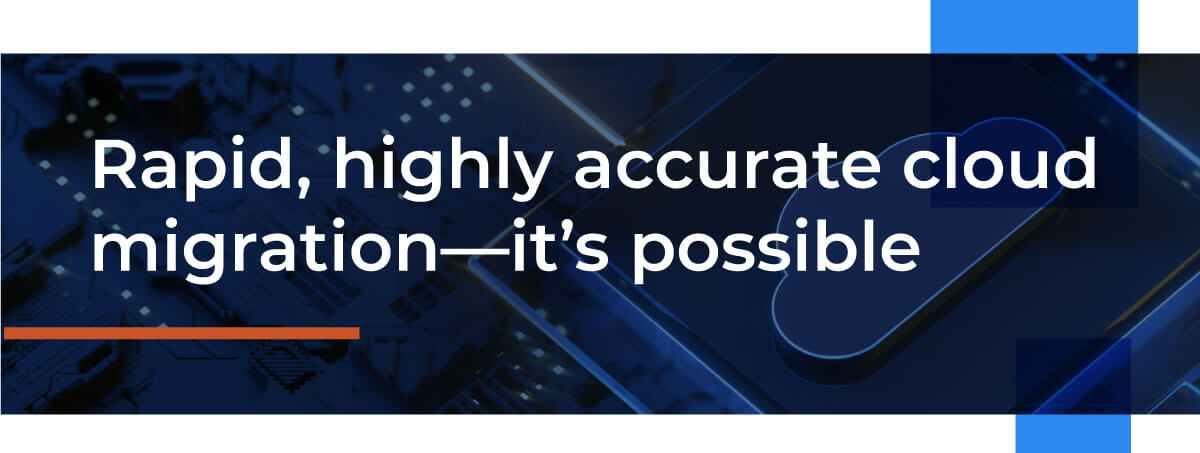
How do you transform the slow pace of technological innovation within a federal agency into an opportunity for innovation and IT systems modernization? Start by taking a cue from the partnership between TSRI and GovCIO. With backing from the Federal Government’s Technology Modernization Fund (TMF) our joint teams propelled the US Department of Housing and Urban Development (HUD) from an outdated twentieth-century Unisys COBOL system into modern, service-oriented Java that was performant and functionally equivalent.
TSRI worked with GovGIO on their process designed to successfully migrate the applications to the Microsoft Azure cloud. They started by defining the five key project goals and taking an inventory of system components, including intersecting platforms. Once we had identified what the unique technical challenges were and how to address each, we created testing strategies and migrated the data stores for each system. Finally, we executed an automated code conversion and refactored the legacy COBOL code.
TSRI’s partnership with GovCIO executed a rapid, holistic mainframe migration process for HUD that has improved their organizational performance while minimizing risk. On day one after the productions systems were switched over from the Unisys mainframe to the Microsoft Azure cloud, the new system supported 25,356 users and 299,715 transactions with only three user problems reported. These are the HUD systems that manage, store, and protect all the personal financial and employment-related eligibility information for FHA insured financing. Given the criticality of the data managed every day by HUD, it was important that the migration run without impact on operations. The result could be seen in the first 30 days during which the new system disbursed just over $2.7 billion dollars in HUD program funds without a single error.
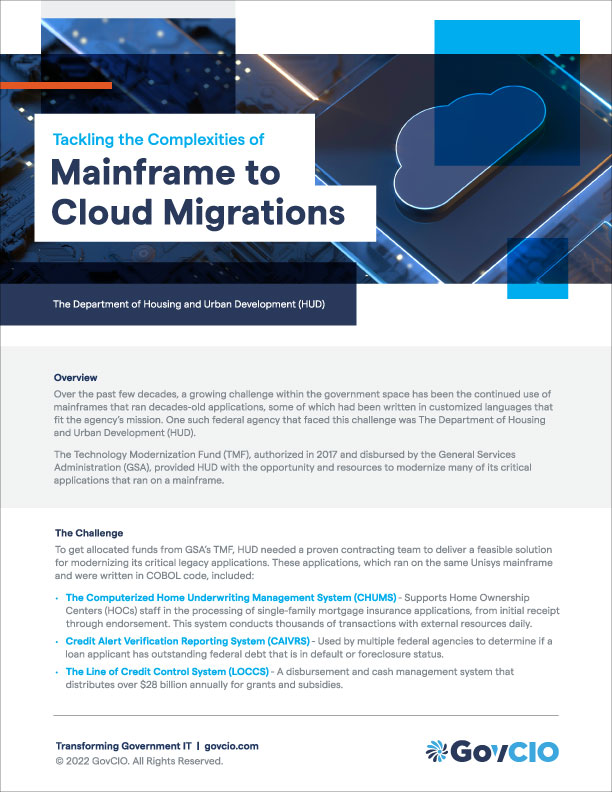 Review the details of how TSRI and GovCIO successfully executed this complex modernization project in our recently published case study.
Review the details of how TSRI and GovCIO successfully executed this complex modernization project in our recently published case study.
The 9 Low-Risk Steps That Led to Success
You might be surprised that HUD and other government agencies still run their IT on mainframes using COBOL (first released in the 1950’s), or MUMPS (from the 1970’s). Running on these aging platforms presents an extensive list of challenges to these agencies: data management, growing storage, collaboration, security, etc. The modernization process typically involves risk, time, and significant expense. It’s understandable that a large agency like HUD would want to select a partner they knew could deliver a low-risk, high-accuracy result.
Working together, we adhered to GovCIO’s nine-step best-practices process that resulted in modernizing systems to modern cloud architectures that can now evolve with HUD, while preventing negative impacts to their mission, day-to-day operations, and security.
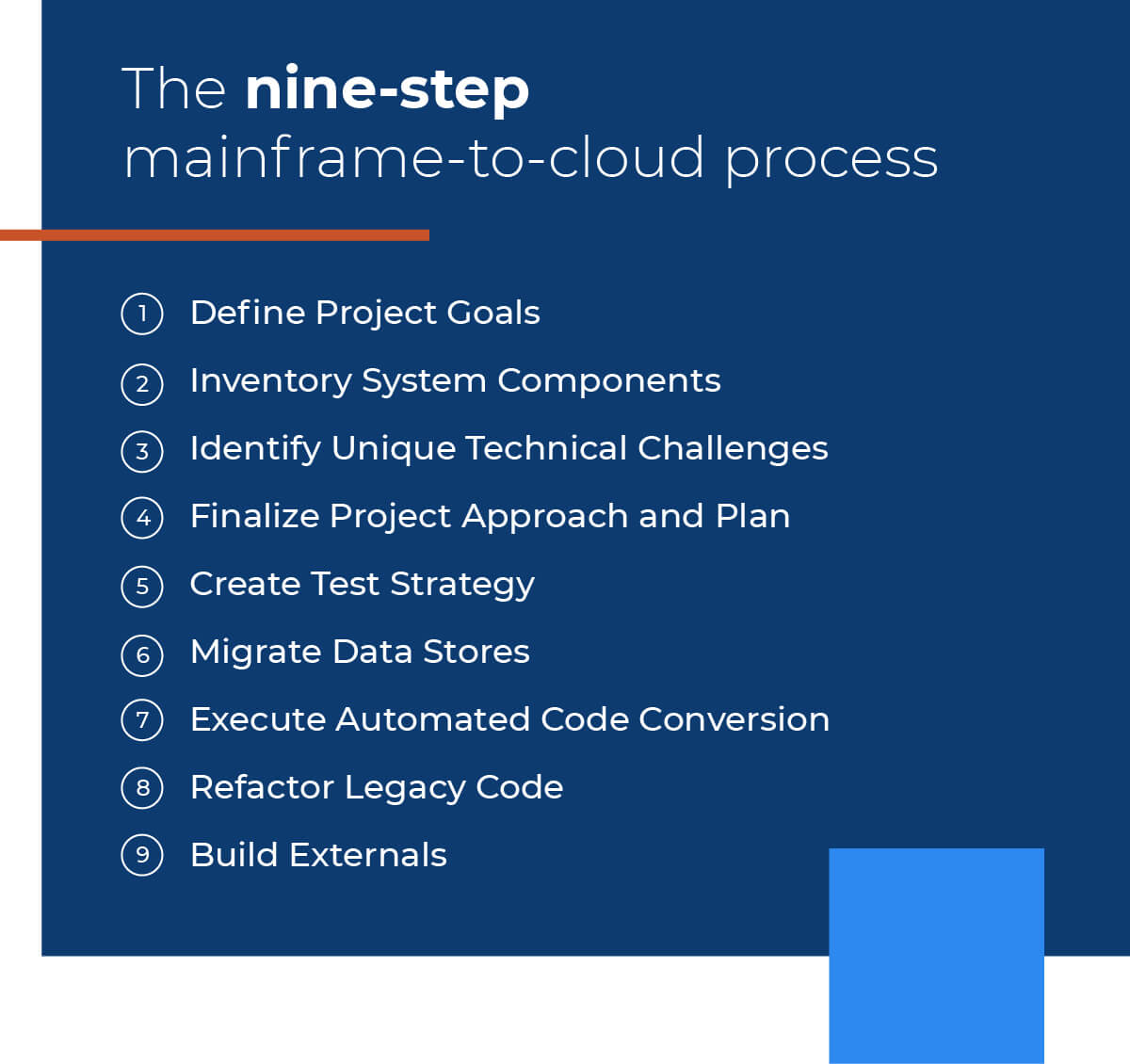
For more details on the nine-step process that enabled HUD to enter the cloud age, read our latest white paper with GovCIO.
A first-person account of HUD’s modernization process with Roger Knapp – Executive Vice President and HUD Program Manager
Only a few engineers know what it feels like to lead a major government agency through an automated mainframe modernization. Roger Knapp is one of them and has been working in the field for over 30 years. As Executive VP of Engineering & Service Delivery at TSRI, Roger has unique insights on the HUD project. He sat down to share them in an interview with GovCIO as part of their Partner Spotlight.
In a short chat, he shares how the TSRI-GovCIO team overcame the challenges not only of modernizing a nationally mission-critical system at risk of obsolescence, but also how to deal with the presence of dynamic SQL data in the legacy application logic.
Get the story straight from Roger in his interview with GovCIO.
TSRI is Here for You
As a leading provider of software modernization services, TSRI enables technology readiness for the cloud and other modern architecture environments. We bring software applications into the future quickly, accurately, and efficiently with low risk and minimal business disruption, accomplishing in months what would otherwise take years.
COBOL to Java - Comture Japanese Car Manufacturer
One of the largest Japanese Car Manufactures now uses TSRI’s modernization methods to increase efficiency in their manufacturing systems. With the help of systems integrator Comture Corporation, TSRI was able to successfully transform 120k lines of COBOL to Java, in a three-week time-period, with over 99% automation levels.
 |
|
- Java
- cobol
- transformation blueprint
- Code Transformation
- Automatic Refactoring
- Application Blueprint
- car manufacturer
- japan
- japanese
- automation
- documentation
- COBOL to Java
- agility
- agile
- architecture
- Software code Conversion
- db2
- ibm
- VSAM
- oracle
- cics
- Tomcat Server
- SonarQube
- Quality Scans
- Code conversion

